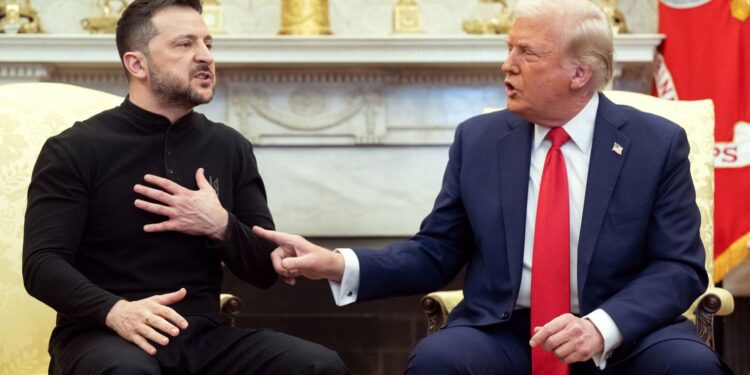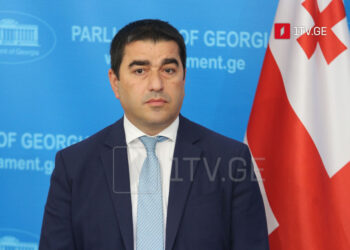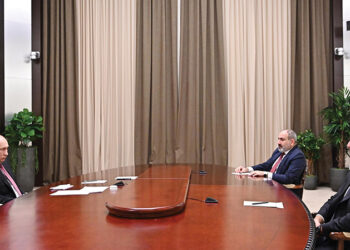President Donald Trump has ordered a pause on all US military aid to Ukraine following a heated Oval Office meeting with Ukrainian President Volodymyr Zelensky on February 28. The suspension aims to pressure Ukraine into engaging in peace negotiations with Russia.
During the meeting, Trump expressed dissatisfaction with Zelensky’s stance on the ongoing conflict, accusing him of not pursuing peace and warning of potential consequences if he does not agree to the US’s proposed peace deal.
Vice President JD Vance criticized Zelensky for showing “entitlement” and emphasized a mineral wealth deal is a better security measure against Russian aggression.
The US has been the largest supplier of military aid to Ukraine since Russia’s 2022 invasion, contributing $119 billion, including $64 billion in military aid. The temporary freeze may impact pre-existing aid commitments, such as a $500 million package signed by former President Joe Biden.
Regarding the EU assistance, since the start of the war, the EU and its Member States have made available close to $145 billion in financial, military, humanitarian, and refugee assistance, of which 65% have been provided as grants or in-kind support and 35% in the form of highly concessional loans.
In addition, in February 2024, European leaders agreed to commit up to$54 billion until 2027for the Ukraine Facility to support Ukraine’s recovery, reconstruction and modernization, as well as its efforts to carry out reforms as part of its accession path to the EU. Furthermore, in October 2024, the EU and G7 partnersagreed to collectively provide loans of $50 billionto support Ukraine’s budgetary, military and reconstruction needs, financed by extraordinary revenues from immobilized Russian sovereign assets. The EU will contribute$20 billion. The first $3.2 billion was disbursed in January 2025. This will bring our commitments to date to close to $198 billion.
This decision has raised concerns among Ukrainian officials and soldiers, who feel betrayed by the sudden halt in support. The organization Razom for Ukraine criticized the move, warning that it could allow Russia to continue its advance westward.
The Trump administration is also reportedly considering easing sanctions on Russia to improve international relations.
Democrats in the US Congress denounced the move.
“By freezing military aid to Ukraine, President Trump has kicked the door wide open for Putin to escalate his violent aggression against innocent Ukrainians. The repercussions will undoubtedly be devastating,” said Senator Jeanne Shaheen, the top Democrat on the Senate Foreign Relations Committee.
The US decision on Ukrainian aid strengthens Russia’s position and makes peace more difficult to obtain, French junior minister for Europe, Benjamin Haddad, said this morning.
Suspending arms to Ukraine made peace “more distant, because it only strengthens the hand of the aggressor on the ground, which is Russia,” Mr Haddad told France 2.
Oleksandr Merezhko, head of the Ukrainian parliament’s foreign affairs committee, said Mr Trump’s military aid pause looked like the US president was pushing Ukraine to capitulate.
“On the surface, this looks really bad. It looks like he is pushing us towards capitulation, meaning (accepting) Russia’s demands,” he said.
Yesterday, Mr Trump again said Mr Zelensky should be more appreciative of US support after earlier responding angrily to an Associated Press report quoting Mr Zelensky as saying the end of the war was “very, very far away.”
“This is the worst statement that could have been made by Zelenskyy, and America will not put up with it for much longer!” Mr Trump wrote on Truth Social, using an alternative spelling of the Ukrainian leader’s name.
Header image: Getty Images














